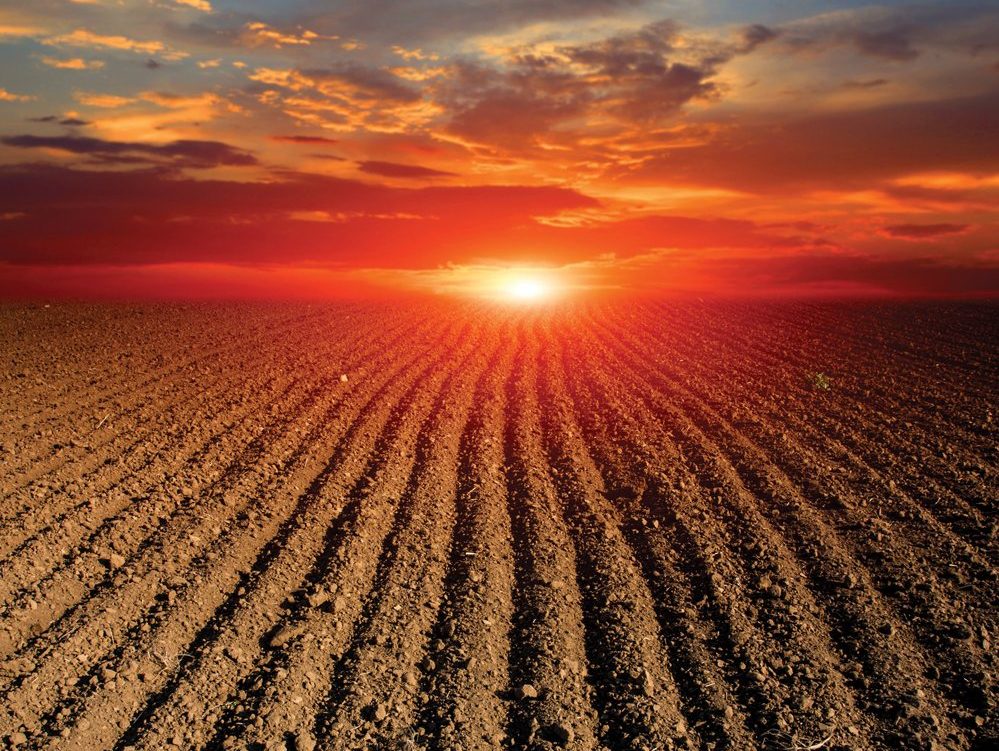Tillage might result in some sort-term gains, but soil scientist Jay Fuhrer warns that the practice causes long-term damage to healthy soil’s best friend — fungi.
“One of the big components in there is the fungi, the fungi and its hyphae,” said Fuhrer, a conservationist with the United States Department of Agriculture. “What breaks up a hyphae? Well, if we pull something made up out of steel through the soil or the compost, it breaks up the hyphae and the fungi numbers get real low.”
While some might be tempted to champion bacteria as the lead decomposer of crop residue, Fuhrer told dairy farmers gathered at a recent conference in Winnipeg that without the mighty fungi, bacteria would never make it to the buffet.

Tillage reduction isn’t just about stopping wind and water erosion — it also keeps soil fungi at their most productive. Photo Credit: Thinkstock
“The principle decomposer in the world is saprophytic fungi… if we didn’t have saprophytic fungi your cornstalks would last year, after year, after year, on the soil surface and the only way you could probably get rid of them is if they blew off the field or you baled them off,” he said. “The bacteria cannot decompose that cornstalk until the fungi bring it down to a simpler chain, then bacteria can step in, take over and make it happen quicker.”
Despite its prominent role in soil health, the long hyphae of fungi are also delicate and particularly susceptible to soil disturbance.
“One of my jobs as a young man in the ’60s was to sit on a tractor with a cultivator and work the summerfallow… and if your dad happened to have a little German heritage in him, all the neighbors worked it four or five times and it pretty much meant you were going to work it six times,” said Fuhrer, whose father’s farm straddled the border of North and South Dakota.
“So when it was all done, was there any fungi left in there? Probably not.”
Initially, he said, yields were strong because tillage allowed for the mineralization of nutrients.
“We were harvesting off the nutrients with crops every other year. That went along pretty good for 30 years and then, all of a sudden, you’ve built a brick, because all organic matter is pretty much gone,” he said. “When we till we make more food available and we get this burst in CO2 because the soil food web goes on a feeding frenzy… the protozoa and the nematodes, the big guys that couldn’t get at all of the bacteria because it was locked up into little pore spaces, now they can because you’ve tilled it and opened it up.”
Ultimately, the frenzy is unsustainable and after releasing a burst of CO2 into the atmosphere, the soil is left dead and deprived of organic material. But that’s not the only change that soil experiences with tillage, said the soil specialist.
Tillage also leaves fields open to water erosion, which transports topsoil, nutrients and water to off-site locations, said Fuhrer, who advocates for the use of cover crops. Wind erosion, standing water and crusting can also be side effects of tillage.
“Minimizing soil disturbance is a good start to rebuilding soil aggregates, pore spaces, soil glue, and soil organic matter,” he said. “This is an essential step for long-term soil productivity.”
Fuhrer said that typical soil is composed of about 45 per cent minerals — like sand, silt and clay — five per cent organic matter, 25 per cent water and 25 per cent air.
“The water and air portions exist in the pore spaces between the soil aggregates,” he said. “Over time, tillage implements reduce and remove the pore spaces from our soils, restricting infiltration and destroying the biological glues which hold our soils together.”
But short-term interests often outweigh concerns for the long-term health of our soil, he added.
“Short-term economics at the expense of the resource is one of the things that I’ve never been able to compete with, because I’m not taking that carbon out, I’m putting carbon back,” he said.





